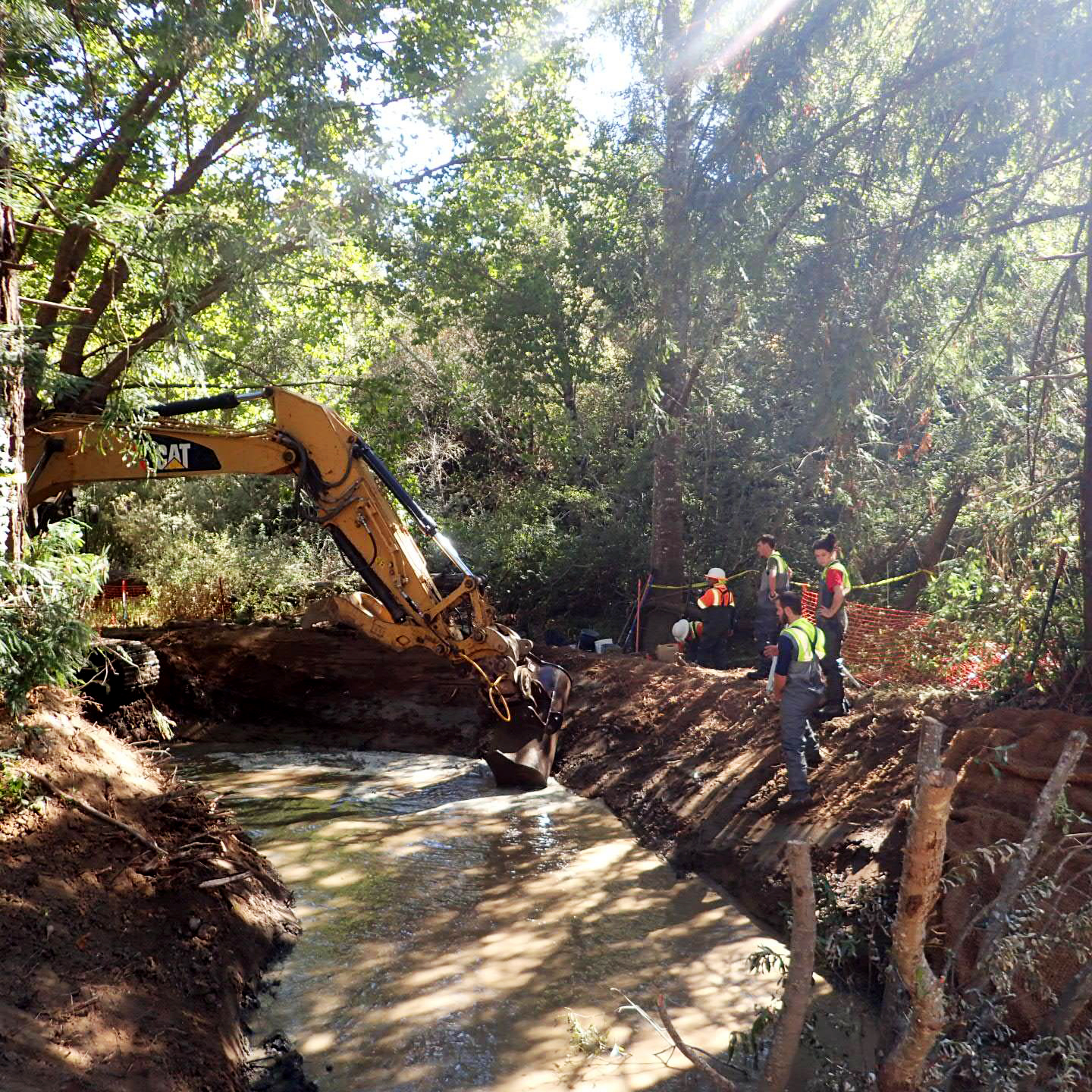SPAWN has recently broken ground on our most ambitious habitat restoration project yet, to restore a mile-long reach of Lagunitas Creek. The goal of this project is to ensure Coho Salmon remain part of our landscape for generations to come. The Lagunitas Creek Floodplain and Riparian Restoration Project is a multi-phase restoration effort over two years to restore the wild and dynamic nature of Lagunitas Creek and provide benefits to endangered species and improve water quality. Our aim is to recover a lost floodplain that has been buried under dirt that was dumped in the creek corridor decades ago to build the villages of Tocaloma and Jewel. Restoring the floodplain along the creek will re-create the large dynamic wetland with side channels, alcoves, and numerous large woody debris structures- all elements that Coho Salmon critically need for recovery. These habitats will create slow off-channel areas that are commonly seen in undeveloped pristine waterways that provide spawning, feeding, and rearing habitat for fish and other wildlife including California freshwater shrimp and California red-legged frog.
“This is one of the largest projects undertaken in the watershed,” said Preston Brown, director of watershed conservation. “Our goal is to restore the natural functions, letting the stream behave how it wants to and improving ecosystem services, not only to benefit salmon but the entire ecosystem that relies on the dynamic nature of the creek,” he added.

Crews trimming willow which will soak in the creek until we plant them along the new side channels.
Following the removal of numerous abandoned and dilapidated structures in 2016, we began work completing engineering designs, permitting, and environmental compliance. Phase one of the project broke finally ground in early August 2018 with installing protections for wildlife, water quality, and natural resources, that included performing surveys for sensitive species within the project area and relocating them away from the site if they could be adversely impacted.
Once the site was safe for wildlife, hand crews began thinning willows and other vegetation and stockpiling wood for later use as large woody debris structures and living habitats. Heavy machinery was brought in to begin removing large concrete retaining walls and other abandoned infrastructure such as asphalt pads, piping, and septic tanks. Construction crews are currently working on excavating and grading, removing the fill dirt and hauling it away. Work is expected to continue through October with the installation of several large woody debris structures, shaping channels and backwater habitats, installing erosion control, and seeding the site. Once the first rains begin we will start planting thousands of native trees, shrubs, forbs through the new habitat areas. We’ll also be staking hundreds of live willow poles and looking for volunteers to help us reforest the areas! Planting will occur through the winter of 2018-2019.

Bulldozers and excavators work to remove the fill dirt and shape the new floodplain.
SPAWN has secured funding and support for this project from the California Department of Fish and Wildlife and the State Water Resources Control Board through competitive grants. Matching funds have been provided by generous donations from SPAWN members and supporters and support from the National Park Service.


